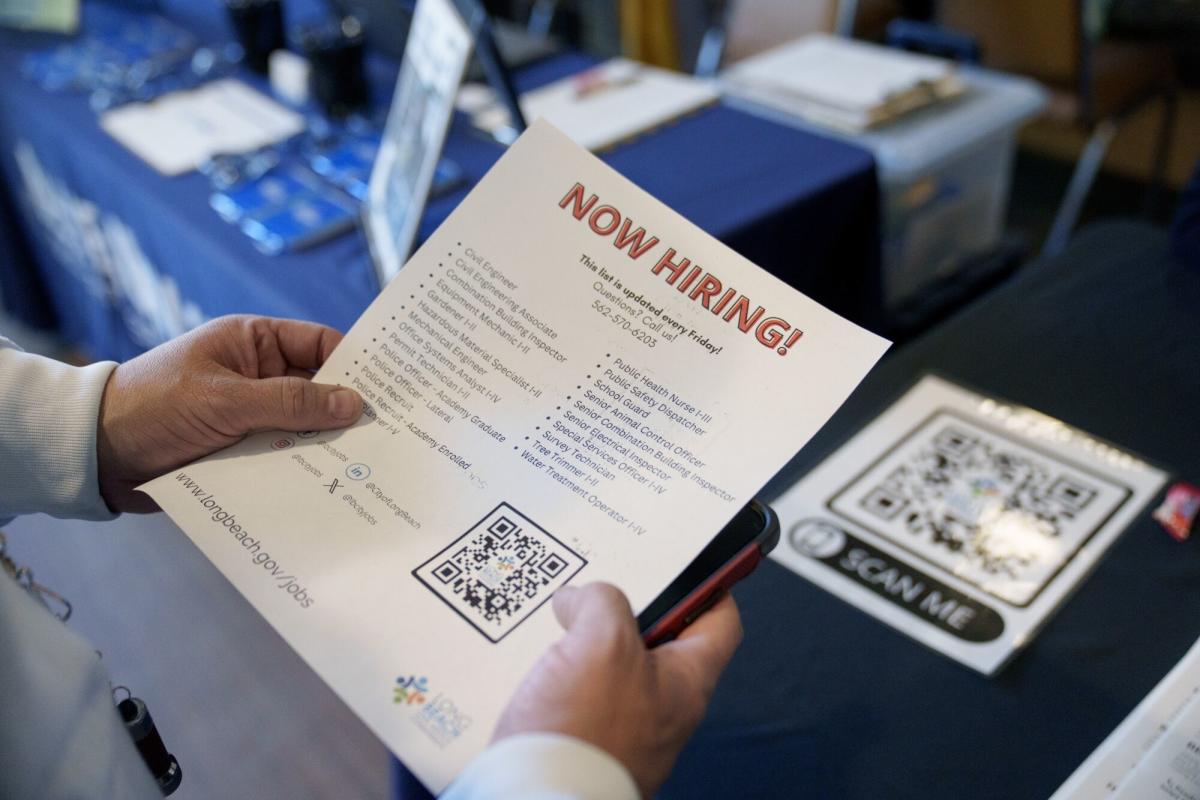

(Bloomberg) — The US job market may be a lot less vibrant than Federal Reserve Chair Jerome Powell and his colleagues seem to think.
Most Read from Bloomberg
Data published Wednesday by the Bureau of Labor Statistics suggest payrolls might have grown about 60,000 less per month on average last year than the roughly 250,000 run-rate derived from the agency’s monthly employment report. The new figures, from the Quarterly Census of Employment and Wages, cover more than 95% of US jobs. and are eventually used in annual revisions to the monthly data.
The QCEW release, as it’s known, adds to uncertainty surrounding the state of the labor market as the US central bank deliberates over when to begin cutting interest rates. While some indicators — such as monthly payrolls and weekly unemployment insurance claims — suggest the market remains robust, others — such as rising unemployment and a decline in job openings — point to cracks developing.
“There’s a pretty good chance that the establishment survey has been really overstating the condition of the labor market,” Barry Knapp, founder of Ironsides Macroeconomics, said of the monthly payroll numbers. “The job market is weaker than the Fed thinks.”
In order to contain wage increases and help bring down inflation, the Fed has effectively been trying to loosen labor conditions by reducing demand for workers. If hiring has already been slower than widely perceived, that raises the risk that Powell and his colleagues will overdo it by keeping monetary policy too tight for too long.
“The Fed could be late to cut rates — cutting only when the labor market already is far into a downward spiral,” Anna Wong, chief US economist at Bloomberg Economics, said in a note published Tuesday.
Monthly employment figures due Friday are projected to show payrolls grew by about 185,000 in May after increasing 175,000 in April, a Bloomberg survey shows. The data are compiled by the BLS from a survey of some 119,000 businesses and government agencies.
The QCEW data, in contrast, are drawn from unemployment insurance tax records filed by more than 12 million establishments. The payroll numbers are benchmarked each February to bring them in line with the QCEW figures. The BLS provides an initial estimate of that revision in August.
A chunk of the potential overestimation of payrolls stems from adjustments the agency makes to the monthly employment report to account for the net amount of businesses opening and going under, Wong and Knapp say. Because the BLS only surveys existing establishments, it uses a so-called birth-death model to estimate those flows.
“The labor market saw a turning point sometime in the second half of 2023,” Wong said. “Business closures surged, while new business formations slowed sharply.”
Particularly Vulnerable
The problem, according to Knapp, is that small firms are particularly vulnerable to high interest rates, and thus more prone to go out of business — and that’s not being picked up by the monthly payrolls survey.
Still, even a significant downward revision only changes the picture of the job market from “boomy” to “healthy,” according to Burning Glass Institute economist Guy Berger. Meanwhile, others are cautious about drawing any implications from the QCEW data at this stage.
Moody’s Analytics Chief Economist Mark Zandi said the numbers are regularly revised, noting that initial concerns payrolls data would be marked down significantly this past February in the annual benchmarking process proved to be misplaced. In the end, they were only about 18,000 less per month in the year through March 2023 than initially reported.
There’s also the matter of the recent surge in undocumented immigrants into the workforce. Sam Coffin, an economist at Morgan Stanley, said that phenomenon is more likely to be registered in the monthly numbers than the QCEW data, because the latter is based on unemployment insurance filings and thus misses those who aren’t authorized to work.
The Fed needs to be careful as it sorts through the mixed signals emanating from the various labor-market indicators, said KPMG Chief Economist Diane Swonk.
“They’ve got to be worried about hitting a tripwire” and triggering a big increase in unemployment, she said.
–With assistance from Alex Tanzi.
Most Read from Bloomberg Businessweek
©2024 Bloomberg L.P.
EMEA Tribune is not involved in this news article, it is taken from our partners and or from the News Agencies. Copyright and Credit go to the News Agencies, email news@emeatribune.com Follow our WhatsApp verified Channel









